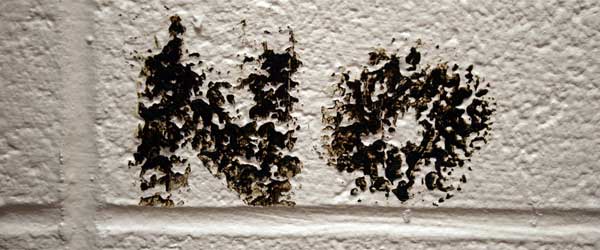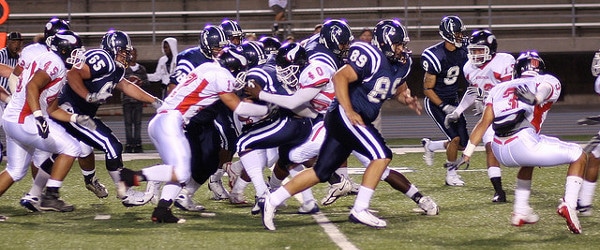Rushing and overloading yourself in science is common, even normal. Surprisingly it is considered as an admirable aspect of “scientific flair” in some quarters. And the sad fact is that it is an ingrained part of the scientific landscape.
But is this the best way to do things? Should you allow yourself to succumb and be swept along in this frenzy in order to demonstrate your “flair”? Should you rush into your science as fast as your feet (or your brain) can take you? I would strongly argue that you shouldn’t. And here’s why.
Rushing means cutting corners. Cutting corners means skimping on the planning. And skimping on the planning can often equate to science that is flimsy at best.
Seasoned scientists can, if you slow down enough to ask them, give you close (and often terrifying) accounts of projects crashing down from their flimsy foundations. Those stories, sad and true, can be distilled and recycled into very simple and important advice.
Never. Rush. The beginning. Ever.
No matter how impatient your brand new boss is, how confident you (or he/she) is in the rapid success of your project-to-be, how fancy and readily available the resources of your new institution seem. Never rush the beginning.
Blitzkrieg science does not necessarily equate good science. In fact, it may represent quite the opposite.
Take a step back before you jump
Taking a step back to thoroughly assess the viability of your project (the many aspects of it) can seem like a waste of your precious bench time, and will not give you fast results to present in your first lab meeting.
But it might actually be the one thing that can steer you clear from failure. There is a lot left to luck even in the best planned scientific endeavor, so you are definitely better off keeping as much as you can reach under control.
A proper experimental design is the best, and in many cases only, way to guarantee a productive end to your research. Here are some hints to help you improve your project design, and therefore make you a better, happier, and undoubtedly more successful scientist.
1. Start your timer. Get honest with yourself about how long you plan to spend on your project, taking into account your program requirements, fellowship status, and your general life goals, if applicable.
Then look at the biological question you have chosen, and try to make a fair assessment of how long it might take you to come up with a valid, interesting answer.
Do you have to generate the necessary reagents and techniques? Do you have a working experimental model? Have you streamlined your data collection? How long will it take to obtain each sample? Do you have mid points or do you have to wait until the end to get meaningful data?
Typically, you might find yourself unable to readily address all those aspects, even using your best foreseeing abilities. What is relevant is actually asking the questions.
They will not only allow you to gauge the difficulty of the project, but it will also kick start your experimental design and guide you through the other important checkpoints.
2. Read critically. It always pays off to spend some time delimiting the boundaries of your project, by putting it in the context of previous data and existing literature.
Read extensively and leisurely about all aspects of your future work, technical and conceptual, and start out up to date with the current knowledge.
Chances are that you will have to struggle to keep up to speed with it from now on. The more information you gather the sooner and better you can focus your work into the most meaningful and interesting direction.
But while you are at it, develop a critical voice in your reading. Many research papers are told from the endpoint, making them sound like a seamless story in which all the experiments were conveniently and elegantly done in a neat chronological order.
Being critical with what you read will help you identify the failed approaches between the lines, so you can avoid them as well and save yourself time and chagrins. Find a poignant, clear spot to place yourself in science, and start building from there.
3. Look behind you. If you are lucky, you will discover that the foundations of your project have already been laid down by its previous “owner” in your lab.
In the midst of this initial excitement, do not to rush into the ritual of transferring the data and reagents from that person.
Firstly, take the time to ask as many question as you can think of before they move on. The more you are immersed in the literature, the easier that will be.
Both their data and reagents are going to be instrumental for your work, so take time as well to determine their quality.
Re-test the tools you inherit to your own satisfaction. Sequence your plasmids, blot your cell lines and checking the availability of stocks. This is of the utmost importance, and should override any concern you might have about good lab manners. Be a good scientist and everyone will treat you like a nice one!
4. Mind your “n”. Most projects stem from experimental designs based on statistically significant differences between control and experimental groups.
The statistical power of the tests that fit your design, and the depth and extend of the differences you expect to observe, are going to determine what sample number you will need to draw meaningful conclusions.
If your samples are wells on a tissue culture plate that you can re-seed day in and day out, you can easily increase the numbers should you end up requiring a bigger n, or if you want to add new experimental conditions down the line.
However, if you samples are lab animals that need to be trained for months, or specimens that need to be treated for long periods of time, or in any other way have an unfavorable ratio of time input vs. information output, you might find that increasing a sample number is not feasible once in mid-project.
To avoid that very frustrating pitfall, use the available preliminary data or similar studies from the literature to calculate or infer what you appropriate n might be. Then revise the backbone design of your project accordingly.
And as your rule of thumb, plan for the worst and give yourself some wiggle room. With honorable exceptions, there is not such a thing as too big an n.
5. Gear up. Before you get things rolling, figure out whether all the equipment that you are going to need to take your experiments to completion is available, and within reach.
Flow cytometry, microscopes for in vivo imaging, gradient machines, HPLCs, phosphoimaging hardware, deep sequencing infrastructure, animal facilities, whatever the requirements of your project are, make sure you will be able to access them when you need to.
That of course does not just mean addressing the physical presence of the equipment or resource.
Make sure to check the state of conservation, the use and maintenance policies and whether it is used frequently enough to assure that you will find someone to troubleshoot with.
Speaking of guidance, go ahead and start procuring some.
6. Get help. It is a widespread misconception that the best lab scientists are the ones that know almost everything and only ask very clever questions. But it is very unscientific to approach an unknown territory without getting all the preliminary information about it that you can gather.
Because in the end, you will be judged based on what you have learned, not on what you already knew. So develop a good rapport with senior scientists around you, and never be afraid to ask for explanations, or to tag along.
The most stupid question can easily turn out to also be the most important one, and the best way to learn something is by watching an expert do it.
7. Prepare for the worst. The inherent risk of failure in your project cannot be eliminated within the parameters of scientific research, but it can definitely be lowered to almost harmless levels by means of a good design and some extra planning.
This can only be done at the initial stage, so one of your first tasks should be to stop and write down, next to your hypothesis, all that can go wrong and lead you to a negative, unpublishable result.
The ideal projects are those that are informative and make some advance regardless of the flavor of the result, but those are not easy to come by, especially for rookies.
So alternatively, try to revamp your yes-or-perish project by designing and implementing alternative strategies.
One easy way is to take on collaborations or side projects, that you can resort to if things go the “hypothesis 0” way. Bear in mind that handling many projects can in itself bring by disaster if you do not learn to prioritize as well.
Finding the right balance between too focused and too distracted will likely take some trial and error, and probably some ardent disagreements with your boss. Weight up your options, but remember that partial failure is still the opposite of a complete one.
8. Climb the chain of command. As much as you are bound to feel like you are alone in your project, you really are part of an intricate network of ideas, materials and discussions.
These are shared within, and expanding outside, the limits of your lab. Finding and defining who is involved in the project with you has two important purposes: giving other scientists proper credit and knowing who to report to.
Once you spot them, it is also helpful to figure out early the availability of your supervisors, so you can identify your daily go-to mentor and set up a discussion routine with the higher-up ones.
This will help you time and process your experiments to get the most productive feedback out of your mentorship meetings. Peer discussion and input are as necessary as a well-calibrated set of pipettes. So if you are still not convinced of the urgency and importance of this, please go back to #6 and keep reading.
9. Read this article. As many times as you need, and read many more like it. There are surely people out there tripping over the same (mile)stones, and learning the same hard lessons.
Get out and squeeze your library and computer dry for all the knowledge and advice you can get. And then have your pick. Be critical, experience for yourself, and give your advice back. Discover your own new solutions, and integrate them into the general wisdom pool.
It might not be officially recognized, but it is as good a way to contribute to the advancement of science.
10. Prove the principle. Once your experimental design has been thoroughly laid out, shake it and bake it. Repeating, or testing anew, the experiment that provides the structural and logical basis for your project is good science at its best.
Moreover, it will warm you up for the lab work to come. So if you know your way well enough around a lab, the best thing to assess the bench-readiness of your new stomping grounds is to actually go ahead and do some science.
When you are ready, embrace your project fully and just pour your excitement into it.
And learn to enjoy the discovery process, making it more meaningful than the unpredictable end result.
That is the ultimate way to ensure your personal success.







